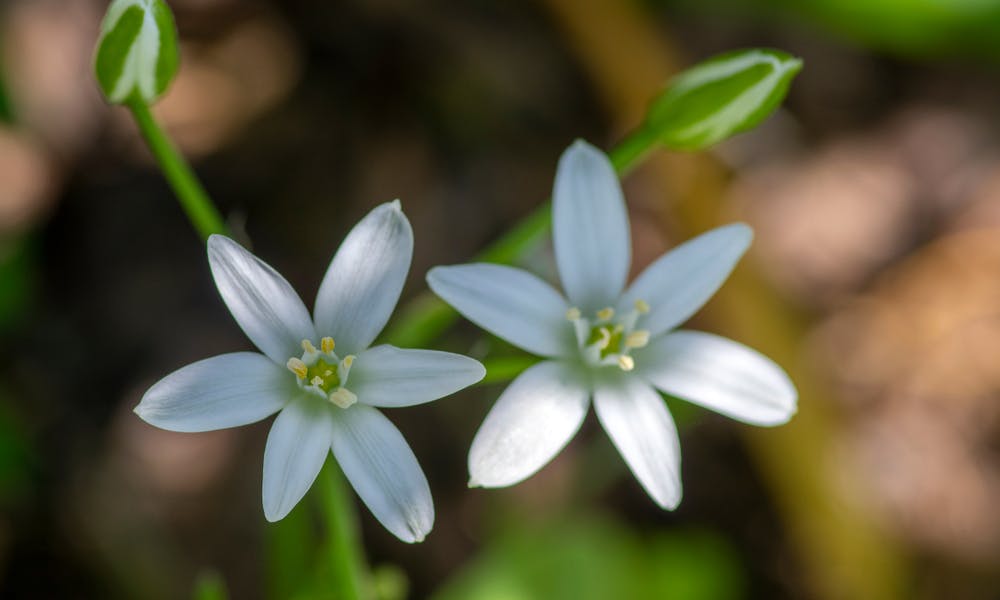MENU
The Star of Bethlehem Flower

This perennial flower, unique in its star-like countenance, has been linked to the birth of Jesus Christ for many centuries now. The creamy white petals that adorn it give it a glowing radiance and are beautiful to behold in nature. Although it is quite commonly grown as an ornamental in gardens, the star of Bethlehem can be a difficult partner to grow with. Tune in to explore not only its history but also the best ways to mitigate its harsher tendencies in this article.
Keep reading to find out the:
- History of the star of Bethlehem
- Plant facts
- Use in cuisine
- Medical uses
- Symbolism and meaning
- How to plant and raise your own
History of the Star of Bethlehem
Native to the South of Africa and Europe and parts of the Caucasus, the Ornithogalum, or Star of Bethlehem, is a part of the Asparagaceae family of perennial plants. The amount of species present in the family has varied, with some accounts going as low as 50 and others as high as 300. Some species have made their way to North America, but are considered a noxious weed there, invasively destroying the native species. The plant has been around for thousands of years, with accounts of it as old as the 1st century. They can be found mostly in white, but orange, yellow, blue, and purple can be found in nature as well.
Plant Facts
Hiding underground as a storage bulb, this plant appears in early spring, flowering more towards the end of the season. The star of Bethlehem has multiple leaf-bearing bulbils that eventually separate and have six to ten basal leaves that sprout from its bulbs. The leaves are typically smoothly grooved and can grow up 12 inches long. It has a long, thin stem, vivid green, ending in an inflorescence that holds up to 20 star-shaped flower petals that encircle five to six stamens and a single pistil. It is a hermaphrodite, containing both male and female parts. It bears fruit that resembles a capsule, with three sides and six ribs, containing many small, black seeds. Although it can be pollinated by insects, due to its hermaphrodite nature it does not require their aid and can self-fertilize.
Use in Cuisine
The star of Bethlehem has been used in cuisine for more than 2,000 years, surprising considering it can be toxic to both humans and animals. It contains chemicals known as cardiac glycosides, which can cause nausea, vomiting, diarrhea and a host of other symptoms. Regardless, some traditional regions use it. Areas of Britain have ground down and dried the bulbs in herbals or boil the bulbs and bake them into bread. Other countries, such as Turkey, boil the flower in water for a few minutes, then deep fry the plant and crack a few eggs on top and allow it to cook into a breaded concoction, which is still popular to this day.
Medicinal Uses
Although warned against by medical authorities, the star of Bethlehem continues to be used medicinally worldwide. A very popular product known as bach flower remedies has been around for a while. Some take it as a protection against congestive heart failure. The flower has been used in Indian homeopathic remedies to deal with traumatic experiences, claiming to help them get over the shock and strengthen their system. Some people claim to use the extract to improve heart function, decrease lung congestion as well as to decrease the retention of water in the legs.
Symbolism and Meaning
The white star of Bethlehem has symbolized purity, being used in many wedding ceremonies and baptisms. It has also come to represent hope, forgiveness, and honesty. The yellow and orange flowers tend to symbolize joy, happiness and positive energy while the purple flower, a rarer breed, symbolizes both beauty and royalty. The name Ornithogalum stems from the Greek word for bird milk. Within the bible, it is thought to be the flower bulbs referred to as doves’ dung. It has also come to be associated with the legend that on the day of birth of Jesus Christ, a star flew over Bethlehem and burst into a thousand tiny pieces, each giving birth to a beautiful white flower.
How to Plant and Raise Your Own
Blooming in spring, the star of Bethlehem is a beautiful flower to add to your own garden. It is wise to be wary of this plant though, as it can quickly overtake the other flowers and decimate your garden if you are not careful. Keeping it separate from other plant species or potting it can reduce the risk greatly, but some still advise that it best not to plant at all.
If you decide to take the chance, here are some tips. It is best to plant the bulbs in fall, as a bit of cold can help to nurture the plant. Make sure the area you plant has access to a good amount of sunlight and give 2-3 inches of space between each bulb. Well-drained soil is necessary, and while it is growing you can feed it once a month with a water-soluble fertilizer. As said before, make sure that the area you plant it in is cut off from other parts of your garden so that the bulbs cannot go off and take over.
A Friend to Be Wary Of
The star of Bethlehem is truly a beautiful flower. It’s wonderful, glowing petals, which open and close from morning to night are a pleasant way to time the rising and setting of the sun. It is a friend to be wary of though and recommended more for experienced gardeners who know how to handle its more invasive tendencies, otherwise, heartbreak may ensue.

